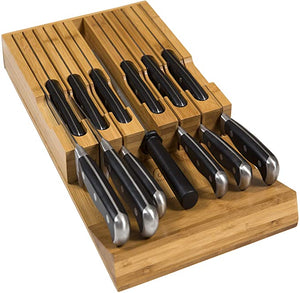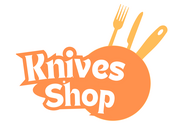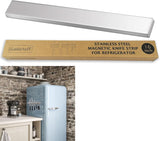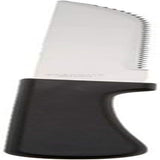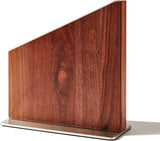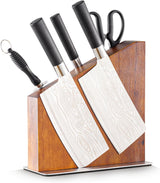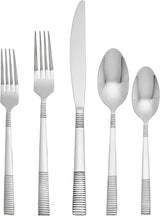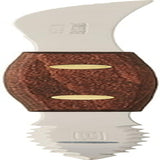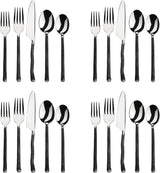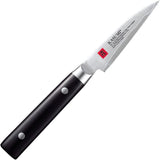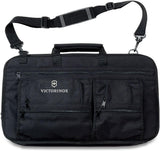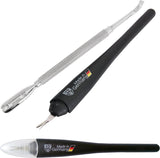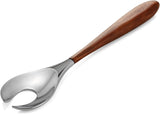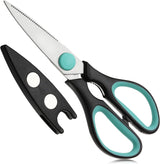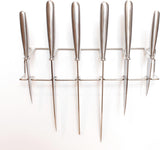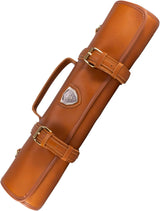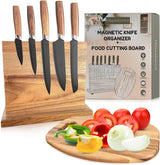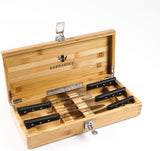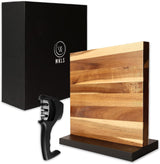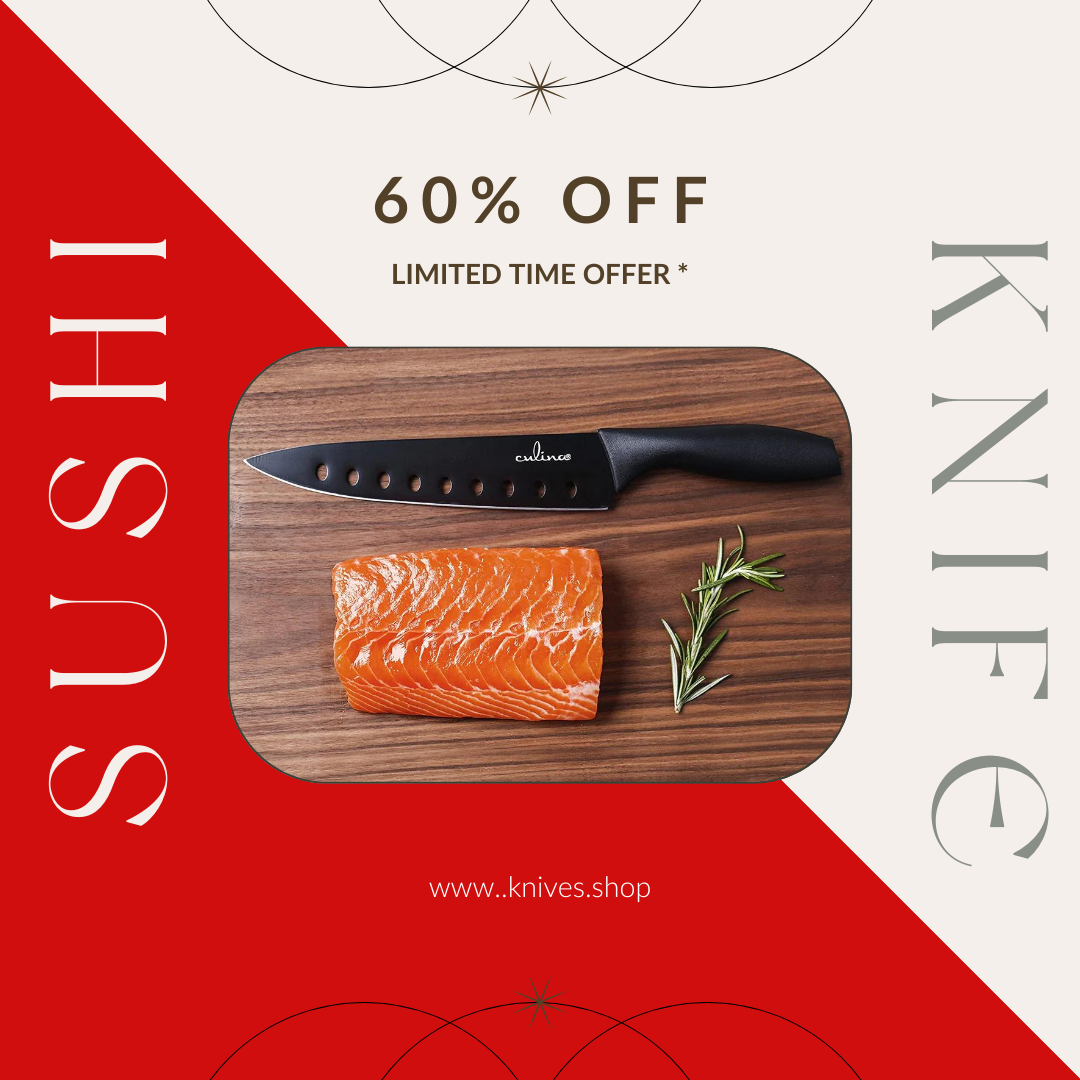When you start cooking properly, rather than just putting on an apron and heating stuff up in a pan and calling it cooking, you'll see that there's a whole universe of kitchen gadgets available to help you. You can tailor your own toolkit to whatever you're eating, how much space you have for single-use things, and your personal preferences on just about anything.

One of the first things a Home Cook needs is a good knife. We're talking about Japanese knives specifically, which are a subclass of knife form and a world unto itself.
Food preparation in Japanese cuisine is extremely meticulous; there are no shortcuts. A Japanese knife, on the other hand, frequently follows suit. It's usually razor-sharp, light, and ideal for making precise cuts on softer foods. They're known for being lightweight and easy to move around with.
Because of their structure, these knives function exceptionally effectively. From the way the entire blade curves or doesn't to how the ergonomic design feels in use, they're a work of art. The materials are frequently of excellent grade, which makes the knives quite costly. However, due to the attention to detail in design, they are built to last.
Difference between the Japanese Knife and the Western Knife
When we talk about "Western-style" knives, we're usually talking about designs from Germany and France, as well as knives made to work with their cuisines. Western counterparts, for example, are designed to function with the rocking-style chopping action used by most European cooks. There are subtle variances in every feature of the knife when comparing Japanese knives to Western-style knives: the steel, the shape of the blade or bevel, and the handle.
Steel
In comparison to Western knives, Japanese knives are fashioned with thinner yet tougher metal. The hardness of the blade is determined by the manner of heating, cooling, and stacking the steel. Stronger metal is advantageous, but it also makes the blade more vulnerable to harm. Because Japanese knives have limited flexibility, they are much more likely to break and chip if they are mistreated or used wrongly than softer, more flexible Western blades.
Blade length
Japanese chef knives are often distinguished by the narrow blade length being honed just on one side, known as a single bevel. Western knives feature a double bevel, which means the blade is sharpened on both sides. For delicately cutting vegetables, slicing fish, or deboning meat, the single bevel allows for more precision and less resistance. In comparison to the slightly shallower thicker blade of a Western knife, a Japanese blade is slightly steeper, which improves precision and helps the knife to stay sharper for longer.
Handle
The knife's handle is the most significant aspect of the instrument since you want it to fit comfortably in your hand while also giving you complete control over the blade. The "tang" is the section of steel that protrudes from the end of the blade and is used to connect the blade to the handle.

The tang of most Japanese knives is fully hidden, generally in a more circular-shaped grip. On Western knives, you will see that the tang is normally exposed down the center of the handle.
Types of Japanese Knives
Many cooks in Japan have a different knife for each duty that they perform in the kitchen. We've just included the most popular styles produced and sold in the Western market. There are many more traditional specialty knives that only get used in traditional Japanese cuisine.
Gyuto - Chef's Knife
One of the first and most widely used knives made in Japan for Japanese sushi chefs. It is lighter and thinner than a European chef's knife, but it is a versatile knife designed for cutting with an easy rocking motion, which is more prevalent in Western cookery. Unlike more conventional Japanese knives, it is sharpened on both sides of the blade.
Santoku Knives
This is the traditional Japanese multi-purpose chef knife. Santoku is a Japanese word that refers to a knife that is used for cutting vegetables, meat, and fish.

Santoku knives are shorter than Gyutou knives and are only honed on one side for more precise cutting. Santoku knife is also known as steak knives.
Petty Knife
This knife is a smaller variant of a chef's knife, similar to other paring or utility knives, making it perfect for more delicate tasks like cutting fruit and vegetables, chopping herbs, or peeling citrus. It's also a wonderful knife for folks who have smaller hands or who find a chef's knife to be too big.
Nakiri Knife
Another double-edged Western-style knife, comparable to the Gyutou. This cleaver-shaped knife, on the other hand, is meant to easily cut through tough vegetable skins as well as chop and dice with precision. In Japanese households, this knife is also widely used.
Butcher Knife Deba
Deba is one of the Western Style Japanese Knives used to butcher fish and cut through small bones, it is slightly thicker than other Japanese knives. Unlike a cleaver, the Deba features a sharp point and a single-bevel blade, making it an excellent filleting knife.
Carving Knife Sujihiki
The Sujihiki has a significantly steeper blade than European carving knives, giving the chef more precision while slicing meat and fish. When filleting and slicing with a single-edge blade, the flat edge on the other side of the blade allows for more control and less resistance.
How To Choose The Right Knife?
Owning a Japanese knife, or even an entire set, can really bring another level of care, precision, and quality to your cooking, whether you're a professional chef or just an ardent home cook. The most important thing is to be realistic about what you'll do with the knife and your ability to care for it.
Look at the Japanese knives you already own and figure out what you appreciate about them before you go out and buy a Japanese knife. Consider the size and length of the knife you prefer to use, as well as the knives you prefer to use for specific jobs.
If you mostly cut and prepare vegetables, for example, the Nakiri or Petty knife can be worth a try. If you prepare a lot of fish, the Deba or Sujihiki are better options. The Gyutou, however, is the ideal knife to acquire when first attempting Japanese knives for most people. A flexible, vital item to have in your kitchen is a high-quality, well-made chef's knife, and a Japanese-made chef's knife may be all you need to develop your learning and enhance your joy in the kitchen.
Regardless of the many styles and shapes of Japanese knives available, you need also examine the range of craftsmanship and quality available. Nowadays, you may get cheaper "Japanese-style" knives that have some of the same characteristics as more traditional blades, but they are more likely to be manufactured in larger workshops rather than by the hands of a competent Japanese blacksmith.
Japanese Knives: How to Maintain Them?
Kitchen knives, regardless of style or origin, endure longer when properly cared for and sharpened on a regular basis. Due to the weakness of the steel and the angle of the blade, Japanese knives require far more attention and care than Western-style knives. You cannot cut any vegetable with a Dull knife.
A Japanese knife is more likely to chip or break if not handled with care due to the lack of flexibility in the blade. As a result, it is always recommended to store the blade in an uncluttered drawer with a protective cover.
Also, avoid using the knife for anything other than chopping and never put it in the dishwasher; both of these things will compromise the blade's integrity.
When it comes to honing the blades of Japanese knives, it is common practice to have them professionally sharpened on a regular basis. Sharpening services are available from local knife merchants or stores in many cities. This is an obviously more expensive approach to keeping your knives sharp, but it can be the most effective technique to keep the blade's shape and angle similar to its original.
Here are some of the Best Japanese Knives that you can Invest in:
Imarku Japanese Chef's Knife-Steel Sharp Paring Knife with Ergonomic Knife Handles
The Imarku 8-inch gyuto paring knife is the best Japanese knife intended for professionals such as chefs, culinary experts, and food caterers, as well as the general public. This Japanese knife has a sharp edge that can be used as a multifunctional knife for cutting, chopping, dicing, and slicing vegetables, fruits, fish, meat, and other things.

It's also great for pounding/smashing garlic and extracting flesh from bones. The knife is made in Germany with a high-carbon stainless steel blade that is 8 inches in length.
The German-made paring knife is sturdy and capable of completing difficult jobs. It will also last a long period and preserve its toughness and usefulness.
The knife's weight and size feel well-balanced, and the user will not feel weighed down by it. It also offers outstanding ergonomics, which reduce the likelihood of finger pains and cramps, especially after prolonged use.
The Imarku 8-inch paring knife is a multi-functional knife that may be used for a variety of cutting tasks in the kitchen. Because of its style and chrome finish, it is also incredibly elegant.
DALSTRONG Chef's Knife - 8 inch - Shogun Series - Damascus Steel- Japanese Super Steel Kitchen Knife
This is one of the high-quality knives that you can invest in. The classic 3-step Honbazuke procedure is used to hand polish the razor-sharp scalpel-like edge to a mirror polish within a staggering 8-12° angle per side. Nitrogen-cooled harness for improved corrosion resistance and flexibility. This is the best Japanese Knife with a Full tang cooking knife with triple-riveted construction for added durability and it is made up of high carbon steel.

The classic 3-step Honbazuke procedure is used to hand polish a razor-sharp scalpel-like edge to a mirror polish within a mind-boggling 8-12° angle per side. Nitrogen-cooled harnesses provide improved flexibility and corrosion resistance. Triple-riveted full-tang cooking knife for added durability. The chef's knife is well-balanced, with a precisely tapered blade that reduces surface resistance for a buttery smooth cut and improved nonstick characteristics.
A chef's knife is a very personal tool, and only the chef understands the importance of a tool that assists her in her profession. European knives are well-crafted, and many Western chefs would always favor these knives over anything else, as they have used and trained with them for years. However, many chefs are intrigued by the originality and skill of Japanese knife manufacture. And many people find it difficult to go back after trying a Japanese Kitchen knife. Finally, what knives will work best for you and your cooking preferences is an entirely personal decision.
